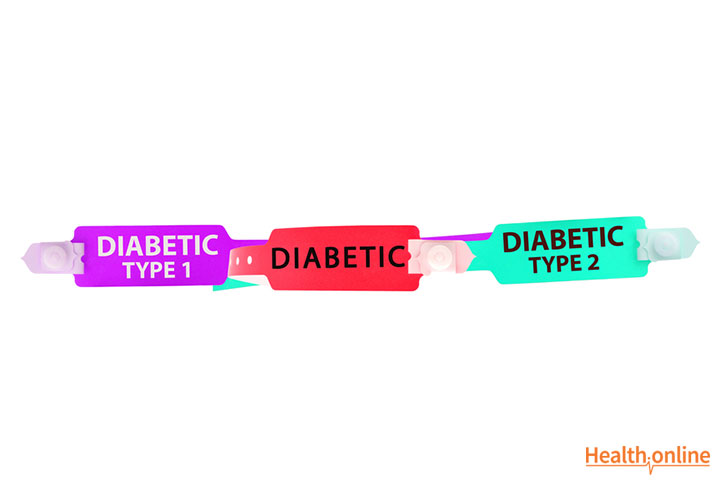Type I Diabetes
Type I Diabetes is much less common than type II, accounting for only 5-10% of diabetes cases. Diabetes type 1 is typically diagnosed before the age of 30.
Type I Diabetes is an autoimmune disease in which the beta cells (insulin producing cells) located in the pancreas are destroyed over a period of time. The more beta cells are destroyed the less insulin that can be made. This results in a lifelong deficiency of insulin and dependency on insulin from external sources.
Autoimmune refers to a condition in which the body mistakes its own cells (the beta cells) for invader cells and destroys them. While the exact cause is unknown, the autoimmune process is thought to be the result of genetic predisposition and an environmental trigger. This event sets off a chain reaction that causes the B cells of the immune system to creates proteins called antibodies that mark the beta cells and signal for their destruction by other parts of the immune response team. The CD4 and CD8T Cells are the soldiers who sniff out and destroy the tagged beta cells
Progression of Type I Diabetes
Pre-Diabetes: The hallmark of pre-diabetes is the presence of GAD, ICA, IAA antibodies. In addition there will be evidence of beta cell injury and a decrease in the amount of insulin being produced.
Diabetes is diagnosed once the number of beta cells is reduced to less than one fourth and the body is no longer able to produce enough insulin to keep up with the demands of the body. At this point blood sugar will be significantly elevated.
Type I Diabetes Symptoms
Symptoms vary per person, but typically include the following
- Frequent urination: including waking at night to urinate and bed wetting
- Weight loss: since glucose is not being used as an energy source, the body must find other energy sources and does so by breaking down fat and muscle
- Thirst
- Hunger
- Blurred Vision
- Drowsiness
- Nausea
- Vomit
- Skin, bladder, vaginal infections
The classic 3 P’s of Diabetes; polyuria (frequent urination), polydipsia (excessive thirst), polyphagia (hunger). Thirst is due to dehydration. Frequent urination is due to the body trying to expel the excess sugar through the urine. Both high and low blood sugar cause hunger.
Type II Diabetes
Type II Diabetes occurs when the body is unable to produce enough insulin to keep blood sugar at a healthy level and/or when the cells of the body are no longer responsive to the insulin that is being produced. Like Type I diabetes, the exact cause is unknown, but thought result from a combination of genetic predisposition and lifestyle factors. Lifestyle factors such as weight, food choices, substance use, physical activity level, and environment.
Accounts for greater than 90% of diabetes cases. Type II used to be associated with older patients, but due to western lifestyles and increasing obesity rates in all ages is now becoming an epidemic in the youth as well.
Progression of Type II Diabetes:
Early in this disease the pancreas is able to overcome the bodies cellular resistance to insulin and maintain normal blood sugar levels by producing extra amounts of insulin (hyperinsulinemia). Over time the beta cells of the pancreas become fatigued and are unable to keep up with the insulin demand, which results in impaired (decreased) insulin production. This leads to chronically elevated blood sugar levels and the diagnosis of diabetes.
- Pre Diabetes- the beta cells are fatigued and there is an impairment in the secretion of insulin. Blood sugar begins to rise.
- Overt Diabetes: Beta cell impairment continues with an even greater deficiency of insulin. The body is even less responsive to insulin leading to decreased uptake of glucose into the cells. Blood sugar level well above normal range. In addition the liver begins releasing excess glucose in between meals.
Type II Diabetes Risk Factors
- Obesity
- Sedentary lifestyle
- High blood pressure
- High triglycerides
- High alcohol intake
- Family history
- Ethnicity: African American, Indian American, Hispanic
- Mother who had gestational diabetes or giving birth to a baby >10lbs
Hallmarks of Type II Diabetes
- Fasting Hyperglycemia occurs >6 hours after meals due to the increased glucose production by the liver
- Postprandial Hyperglycemia occurs directly after meals is caused by the decrease uptake of glucose by the cells
- Insulin Resistance: decreased cellular receptor sensitivity to insulin that results in decreased uptake of glucose into the cell.
Type II Diabetes Symptoms
Symptoms vary per person, but typically include the following
- Thirst
- Frequent urination
- Hunger
- Dry mouth
- Headaches
- Fatigue
- Weight loss or gain
The classic 3 P’s; polyuria (frequent urination), polydipsia (excessive thirst), polyphagia (hunger). Thirst is due to dehydration. Frequent urination is due to the body trying to expel the excess sugar through the urine. Both high and low blood sugar cause hunger.





